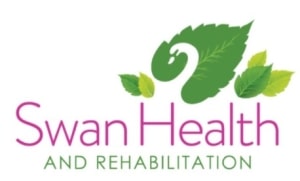Please tab through our advice below, and if you have any queries just give us a call on 01782 405500
We can then get you booked in to speak to one of our Clinicians either via Telephone or Video.

Please tab through our advice below, and if you have any queries just give us a call on 01782 405500
We can then get you booked in to speak to one of our Clinicians either via Telephone or Video.
In the first few days after any injury it is often difficult to fully assess and make an accurate diagnosis, therefore sometimes people have a wasted journey to their GP or Physiotherapist.
If you have had a sudden onset of pain without any explanation either consult your GP or give us a call on 01782 405500
Back problems are often best assessed and treated as soon as possible but if you have sustained an injury that can easily be explained e.g. rolling your ankle, straining a muscle, twisting your knee etc please take a look at the guidelines above to start the healing process and come see us in a few days!
These should only be used up to 72 hours after the injury was sustained.
If you feel that you need to use these guidelines then the activity causing pain should be ceased until you have been fully assessed by the a Physiotherapist or healthcare professional, as further injury could easily occur.
Take precautions to avoid re-injury of the body part e.g. support an injured wrist when out in public to avoid getting knocked.
Rest from any intense activity but continue to function as normally as possible without causing undue pain.
To be used for first 72 hours after injury as it will help reduce swelling. Apply ice to the injured area for a maximum of 15 minutes wrapping the ice in a thin cloth to avoid burning the skin. Ensure the ice bag is large enough to cover the surface area of the injury site. Repeat as often as possible throughout the day, ideally every hour.
You may want to apply a tubigrip to the injury site. Ensure that the tubigrip is not too tight (you should be able to get your fingers between it and the skin) and that there are no wrinkles in it.
Do not wear a tubigrip when lying down as this compromises circulation – so do not wear at night.
Keep the injured body part above heart height.
Eg put a foot up on pillows whilst lying down for ankle/knee injuries, or put an elbow on pillows in sitting for elbow/hand injuries.
DO NOT MIX Ice, Compression or Elevation as this makes circulation worse.
i.e. don’t sit with your foot raised and an ice pack on, or with a tubigrip on and ice
Do one at a time.
Use these after the first 72 hours.
Hand, Wrist, Foot, Ankle Injuries:
Injuries to other areas:
Apply ice for 2-3 minutes, then apply heat for 2-3 minutes. Repeat this 4-5 times always finishing with ice.
DO:
DONT:
“We operate a team approach at Swan Physio so that our clients get the maximum benefit from their treatment. We have a team of Therapists with different specialties to get you the expert treatment required.
We also work closely with the clinical team of our sister company Swan Health and Rehabilitation who provide services complementary to Physiotherapy.”
Monday: Closed
Tuesday: 9.00 – 19.00
Wednesday: 09.00 – 17.30
Thursday: 9.00 – 19.00
Friday: 9.00- 16.00
Saturday: Closed
Sunday: Closed
Times last updated: October 2023
Swan Health & Rehabilitation Ltd / Swan Physio,
The Keele Centre,
Three Mile Lane,
Keele,
Newcastle-under-Lyme,
Staffordshire,
ST5 5HH
Unit Numbers:
5 for Swan Physio
6 for Cygnets
7 for SHAR
This site uses cookies. By continuing to browse the site, you are agreeing to our use of cookies.
OKLearn moreWe may request cookies to be set on your device. We use cookies to let us know when you visit our websites, how you interact with us, to enrich your user experience, and to customize your relationship with our website.
Click on the different category headings to find out more. You can also change some of your preferences. Note that blocking some types of cookies may impact your experience on our websites and the services we are able to offer.
These cookies are strictly necessary to provide you with services available through our website and to use some of its features.
Because these cookies are strictly necessary to deliver the website, refuseing them will have impact how our site functions. You always can block or delete cookies by changing your browser settings and force blocking all cookies on this website. But this will always prompt you to accept/refuse cookies when revisiting our site.
We fully respect if you want to refuse cookies but to avoid asking you again and again kindly allow us to store a cookie for that. You are free to opt out any time or opt in for other cookies to get a better experience. If you refuse cookies we will remove all set cookies in our domain.
We provide you with a list of stored cookies on your computer in our domain so you can check what we stored. Due to security reasons we are not able to show or modify cookies from other domains. You can check these in your browser security settings.
We also use different external services like Google Webfonts, Google Maps, and external Video providers. Since these providers may collect personal data like your IP address we allow you to block them here. Please be aware that this might heavily reduce the functionality and appearance of our site. Changes will take effect once you reload the page.
Google Webfont Settings:
Google Map Settings:
Google reCaptcha Settings:
Vimeo and Youtube video embeds:
